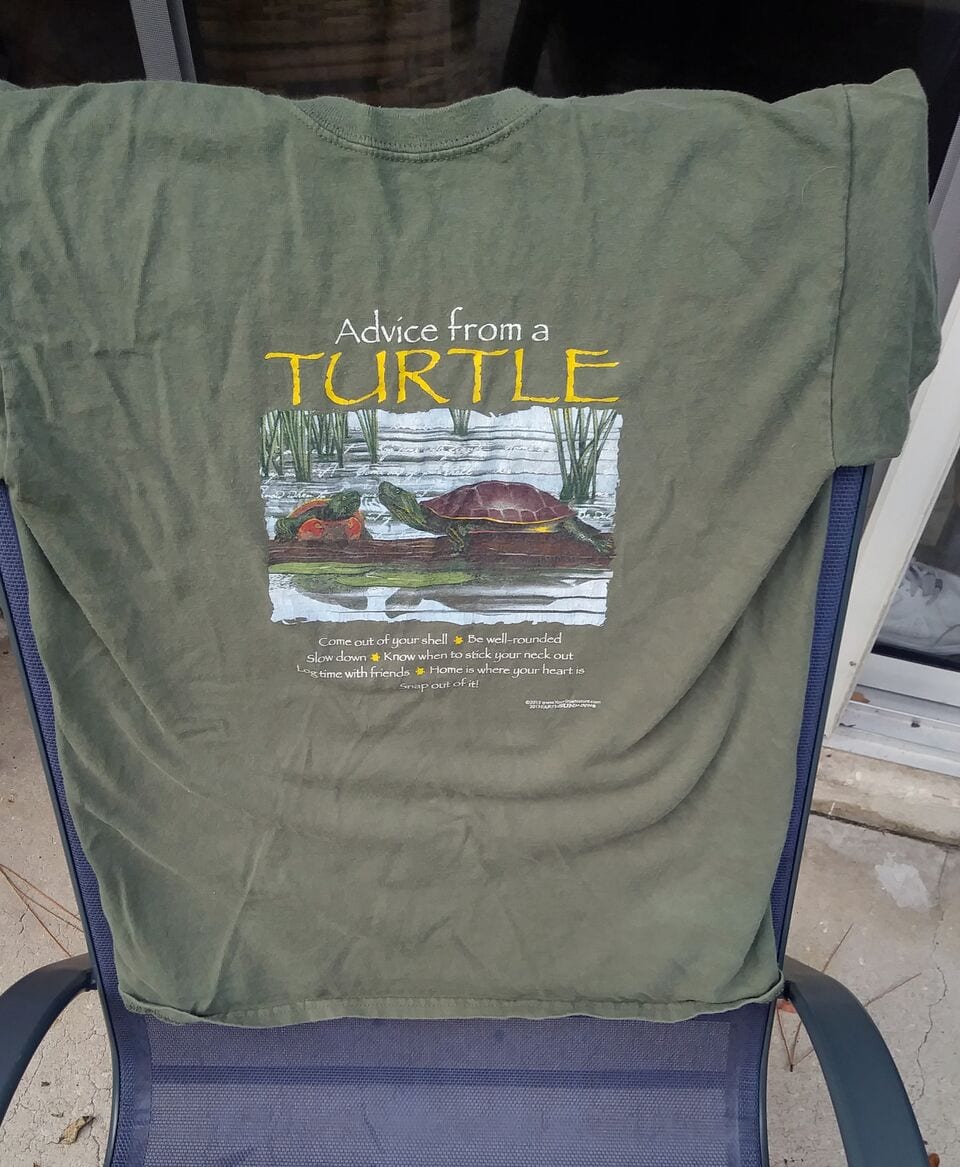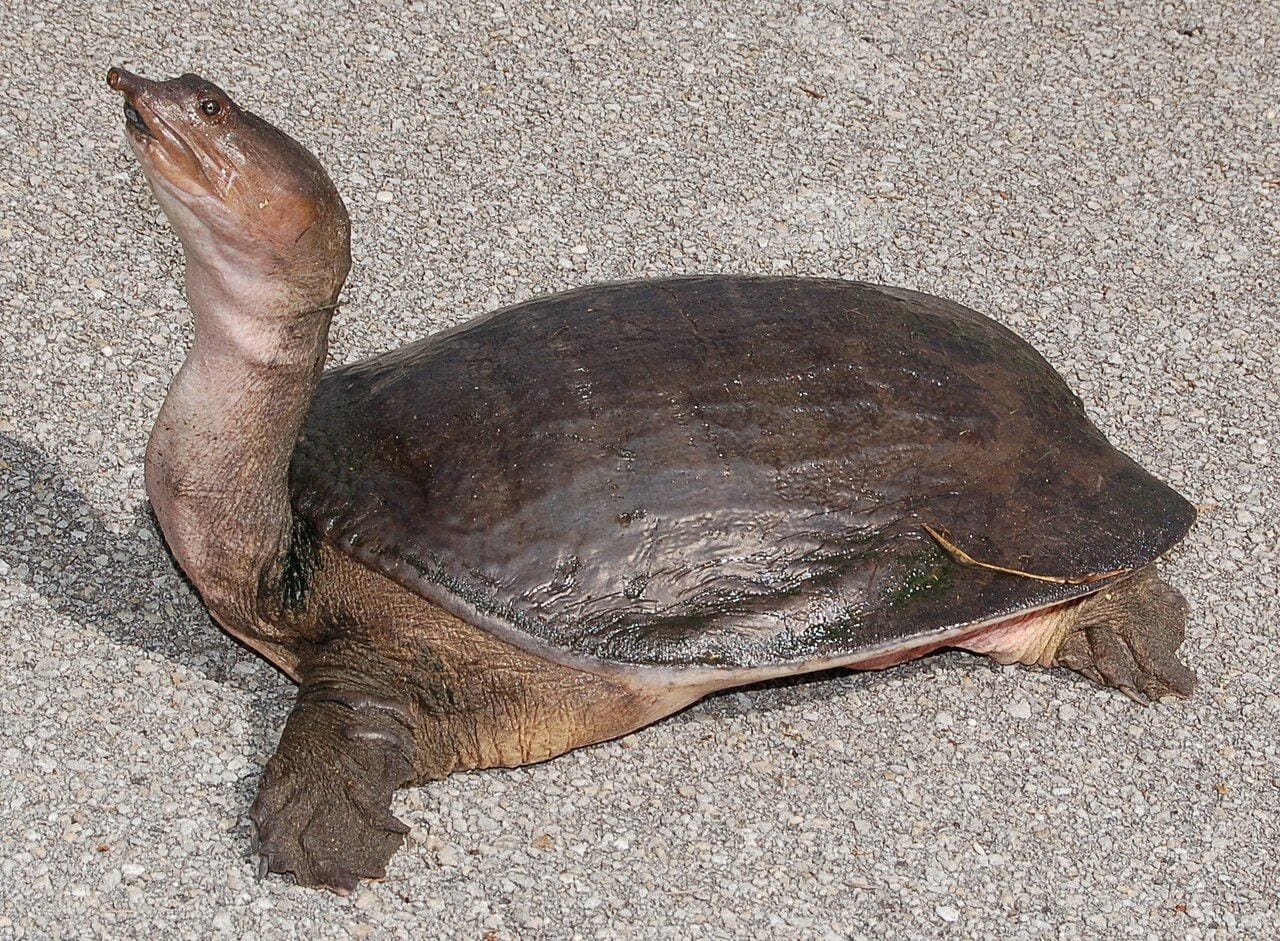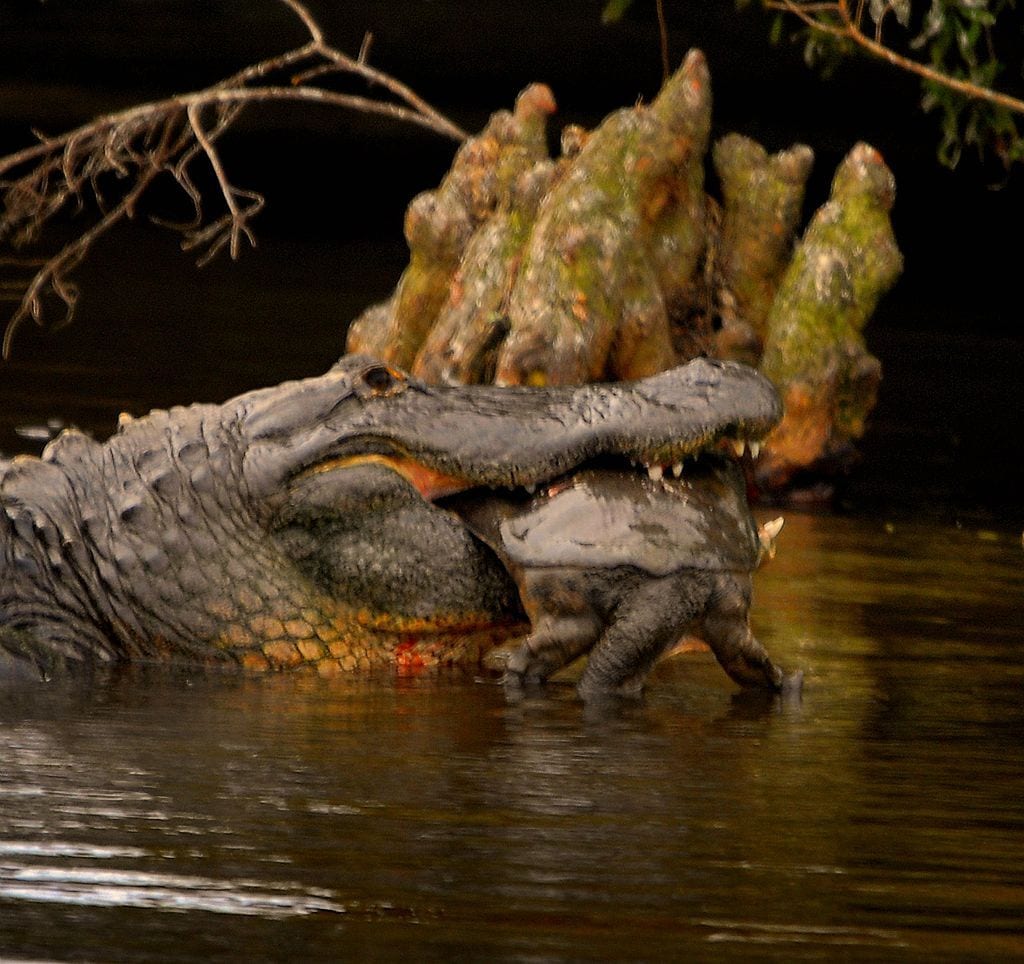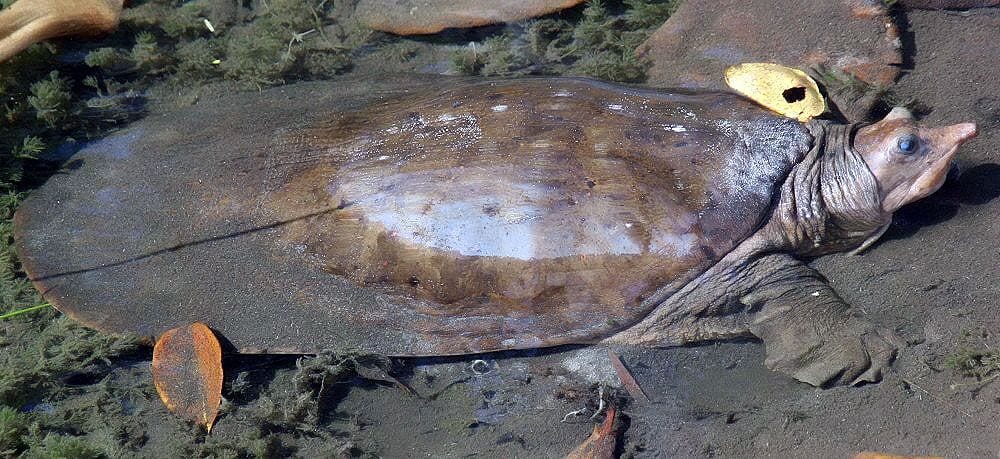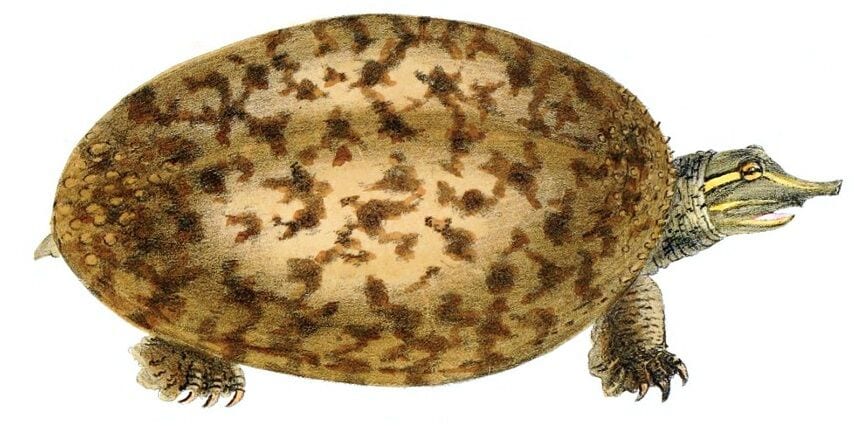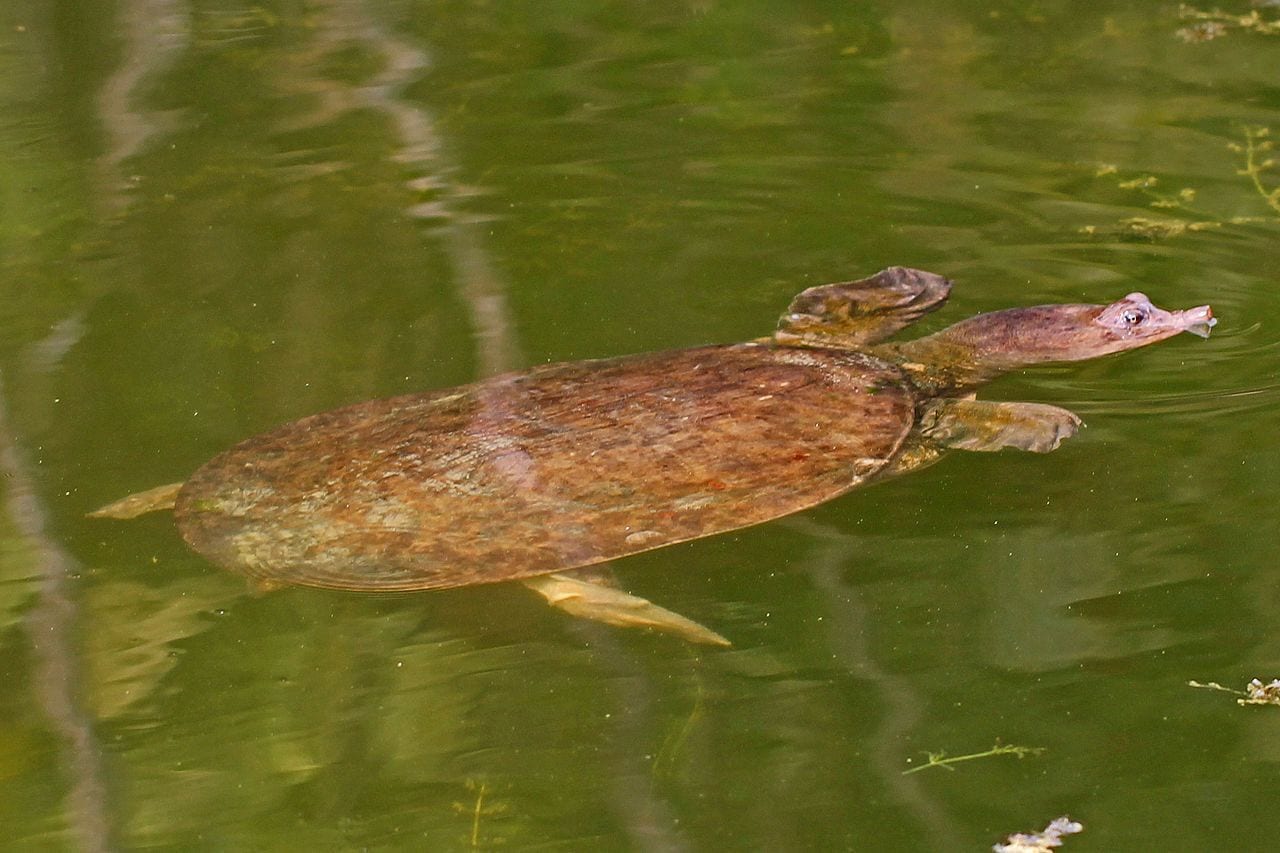Florida Waterways
“FLORIDA TURTLES”
By Kevin McCarthy
CAPTIONS:
A lithograph of a softshell turtle
A softshell turtle in a Florida park
A softshell turtle swimming along
A softshell turtle on land
A large softshell turtle caught by a gator
A turtle t-shirt
One of the most common sights on our Florida waterways is the turtle. Inland waterways like rivers and lakes have many varieties that boaters and fishermen can see on a regular basis, whether on the river’s bank or on a log lying in the water. I’ve seen far more turtles on such waterways than in the Gulf of Mexico or Atlantic Ocean, although those latter bodies of water have many more species.
We have several kinds of turtles in this state, for example the soft shell, the Green Turtle, the Loggerhead, the Leatherback, and the Suwannee Cooter, plus many more. A lot of Floridians have pet turtles, but releasing non-native species into the wild is against the law. Also disturbing the nests of sea turtles along our beaches is against the law. Letting the turtles lay their eggs, which will later hatch into many little ones that make a mad dash for the safety of the sea, has resulted in record numbers of new turtles last year, despite the red tide onslaught.
Such reptiles face many threats from larger animals and human pollution. For example, a recent finding of herpetologists and other scientists who study turtles, found that almost all sea turtles studied in all parts of the world, have microplastics in their guts. If only we could stop using plastic water bottles and containers that will be around for hundreds of years.
The one kind of turtle that is found all over the state, and in every kind of waterway, is the Florida softshell turtle, although it does not often like brackish water or rivers with strong currents, instead preferring still water or slowly-moving rivers. That means, we can find them in lakes, marshes, swamps, sinkholes, and even manmade ditches.
The softshell turtle has a flat body, a long neck, a snorkel-like nose, and webbed feet, each foot with three claws. Its leathery skin makes it different from the turtle that many people know with a hard shell. The reptile’s color, usually a dark brown or olive green, is darker than that of most other turtles, and its underside has a whitish or cream color. Adult females can be three to five times larger than males. The softshell turtle spends most of its time in the water, and comes out only to bask or lay eggs. It eats fish, insects, frogs, and even mollusks. What surprises people is how fast that particular species can move.
Finally, the T-shirt illustrated here, entitled “Advice from a Turtle,” offers these pieces of wisdom: “Come out of your shell. Be well-rounded. Slow down. Know when to stick your head out. Log time with friends. Home is where your heart is. Snap out of it.”
Kevin McCarthy, the author of North Florida Waterways 2013 – (available at amazon.com), can be reached at ceyhankevin@gmail.com.

